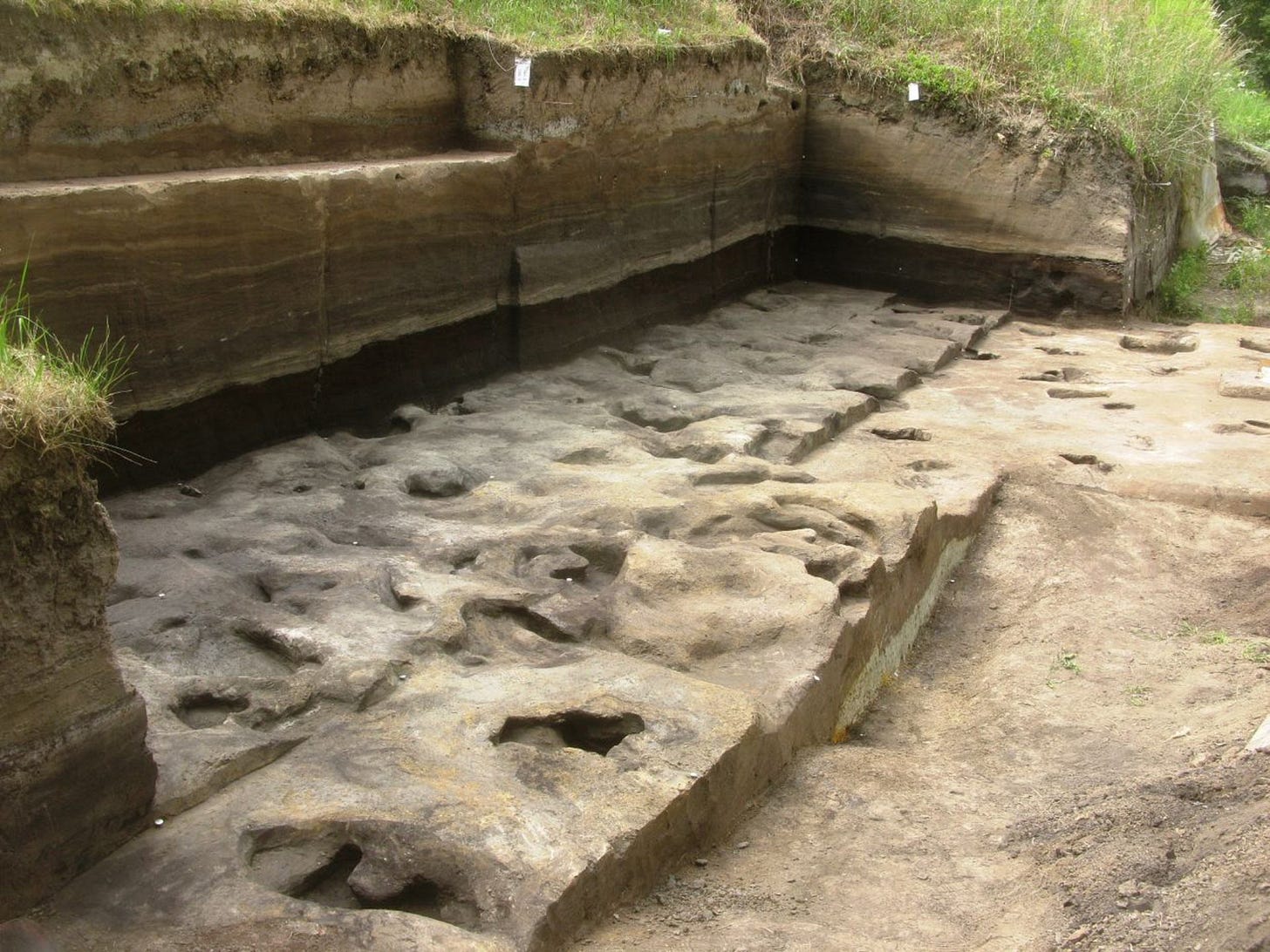Unraveling 300,000 Year Old Ancient Footprints
Homo heidelbergensis and Prehistoric Wildlife at Schöningen
In a groundbreaking archaeological discovery1, scientists have unearthed a fascinating glimpse into the past at Schöningen, a renowned Middle Pleistocene site situated on the eastern border of Lower Saxony, Germany. Among the findings are three footprints of Homo heidelbergensis, a direct ancestor of Neanderthals, as well as a myriad of footprints belonging to elephants and other herbivorous species. This discovery sheds light on what life might have been like in Lower Saxony approximately 300,000 years ago, offering valuable insights into the ancient environment and the diverse mammalian inhabitants of the area.


